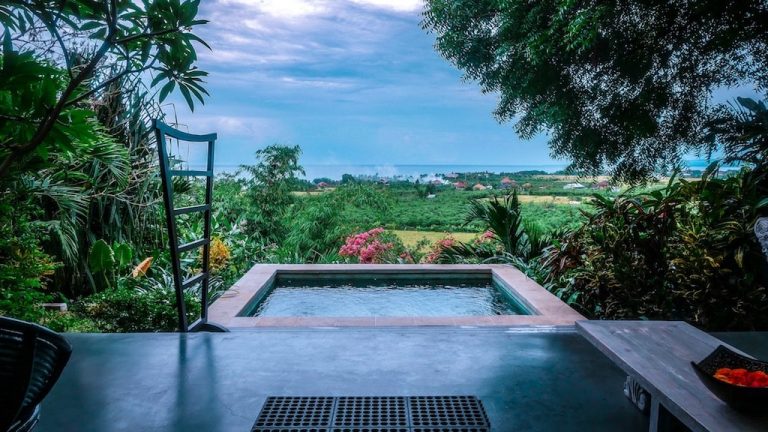I was at the trailhead, ready to go. My new hiking boots were snug, and excitement was high. This was the start of my first backpacking adventure. My pack was heavy but I felt prepared for what was ahead. It was about more than just hiking. It was about diving into nature, far from everyday life. I listened to tips from experienced backpackers and planned every detail.
Backpacking combines hiking and camping in the wilderness. It’s a great way to really connect with the outdoors. But I learned you have to plan well. Every piece of gear had to be chosen for its need and lightness. I got great advice from my local REI store and online.
The first tip I followed was to start with short hikes. This helped me get used to my gear and gain confidence. As I learned, my gear changed and got better suited to my needs. Many beginners, like me, save money by borrowing expensive items.
On my journey, I realized how crucial it is to be prepared physically and mentally. The right food and gear made a huge difference. Having access to advice from experienced backpackers and shops like REI was very helpful. Backpacking brings you closer to nature in a way that’s different from car camping.
Key Takeaways
- Start with short, local overnight hikes to build confidence and test gear.
- Borrow or rent expensive equipment like tents and sleeping bags initially to save costs.
- Focus on packing essential items to ensure comfort and safety.
- Seek advice from experienced backpackers and retailers like REI.
- Backpacking offers a rich, immersive connection with nature beyond traditional camping.
Choosing an Easy Backpacking Destination
Beginners should pick a first-time backpacking spot that’s easy and fun. It’s key to get backpacking advice from those who know the ropes. Talking to experts at outdoor stores, joining hiking clubs, or checking out guidebooks can help a lot.
Consulting with Experts
I learned a lot by asking experienced backpackers and REI staff for tips. They taught me how to select the right place to start. A simple visit to an outdoor shop can open up a treasure trove of local advice and tips.
Picking a Close Location
Choose a spot near home to save on travel and enjoy nature sooner. For example, a simple place 30 minutes away is perfect for beginners. This means you can get your camp set up before it gets dark, which is safer and more comfortable.
Considering Water Sources
It’s important to check if your destination has water available. Having access to water means carrying less, which makes your backpack lighter. I often pick places where I can easily treat water with chemicals or a filter.
Understanding Elevation Gain
Look for trails that aren’t too steep to avoid getting tired quickly. Trails with gentle inclines are best for those new to backpacking. Choosing paths with easy climbs makes sure you enjoy the journey without getting worn out.
- Gathering insights from experienced hikers and local outdoor retailers.
- Choosing nearby destinations to optimize time in nature.
- Ensuring the availability of water resources.
- Selecting trails with minimal elevation gain.
Getting Essential Gear and Clothing
Finding the right backpacking gear and clothing is crucial for a good time outdoors. You can rent equipment to cut down on costs at first. This approach helps manage the expense of investing in backpacking gear.
Tent and Backpack
Look for durable tents and backpacks. Ultralight gear is awesome but pricey. Saving weight might cost $100 per pound. A 50-liter backpack is perfect for short trips of 1-3 nights. It’s big enough but not too bulky for new backpackers.
Consider brands like Nashville Pack, Gossamer Gear, and Hyperlite Mountain Gear for quality. The Gossamer Gear Gorilla 50L and Kumo 36L are great for longer hikes like the John Muir Trail.
Sleeping Bag and Pad
Picking the right sleeping bag and pad makes your nights comfortable. A 3-season sleeping bag is a good start for beginners. Big Agnes has some solid choices. The R-value on your sleeping pad matters too. It tells you how well the pad insulates. A higher R-value means warmth during cold nights.
Choosing Proper Footwear
Choosing good footwear is key. It’s vital to wear hiking boots or trail shoes that fit well. When backpacking, carry no more than 20-25% of your body weight. Bring ankle-high hiking socks and an extra pair. Good socks keep your feet dry and comfy at night. Fabrics like polyester or nylon in your backpacking clothing prevent moisture. This means less chance of blisters.
By carefully picking your gear and clothes, you’re set for a comfortable, safe backpacking adventure.
Planning Your Food and Nutrition
When you plan a backpacking trip, food and water are key. I’ve learned that eating and drinking well makes the trip better. You want enough energy and strength to enjoy your journey from start to finish.
Just-Add-Water Meals
For backpackers, easy meals are a must. Just-add-water meals are both simple and light. They don’t take much space and are quick to make. With a cost of $12 to $18, they are worth it for their convenience. Many hikers also make their own meals to save money.

Trail Snacks for Energy
It’s also important to have snacks for quick energy. I always bring trail mix, dried fruits, and nuts. These keep me going without too much trash. Aim for 200-300 extra calories each hour you hike. This should include 40-60 grams of carbs to keep your energy steady.
Proper Hydration
Staying hydrated is also critical. Bring plenty of water and know how to make wild water safe. Always watch for dehydration signs and use electrolyte packets if needed. Drink often, reminding yourself every 60-90 minutes. It’s better to have more water than not enough.
Good planning of meals and hydration is key to a great backpacking trip. By following these tips, you’ll stay energized and hydrated. This way, you’re always ready for what the trail brings next.
Backpacking Tips for Beginners
Starting your backpacking journey is exciting. Follow these essential backpacking tips for a great start. Pick an easy destination near home to begin. Choose a popular path with known campsites for more fun and fewer problems. Backpacking with a heavy pack is harder, so pick shorter trails than you would for a day hike. Find trails with little elevation gain to keep things easy.
- First-time backpacking advice: Choose places with lakes or big rivers for easy water access.
- Camping hacks: Borrow or rent expensive gear like tents, sleeping bags, and pads to save money. Sharing a two-person tent cuts down on weight and expenses.
- Pick a comfortable, well-fitted backpack. Get help from a specialist to ensure a good fit and weight distribution.
- Your clothes should wick away sweat, keep you warm, and protect against the weather.
Eat light, high-calorie foods to keep your energy up. Snack every 60 to 90 minutes. Good options include olive oil (250 calories per ounce), walnuts (185 calories per ounce), and peanut butter (167 calories per ounce).
Leave No Trace principles are crucial for outdoor adventures. Always check campsite rules and the weather before your trip. This prepares you and keeps you safe on the trail.
Finally, going with seasoned backpackers is wise. They can share their knowledge. This makes your adventure safer and more fun.
Training and Preparation
Before you start wilderness treks, getting ready is key. You need to get physically fit and learn important outdoor rules. These help you lessen your impact on nature and follow the law.
Physical Conditioning with a Loaded Pack
Training with a heavy backpack is vital. Start with a light load and slowly add more weight. This gets you ready for carrying all your gear. Add in workouts and running to boost your stamina and fitness.
Leave No Trace Principles
Following Leave No Trace is a must for protecting nature. It teaches us to reduce our impact on the environment. Simple actions like taking your trash and staying on paths help keep the outdoors beautiful for everyone.
Obtaining Necessary Permits
Getting the right permits is important and a legal must. Permits help manage the number of visitors in nature spots. Make sure you get them early to avoid trouble and support nature conservation.
By sticking to these safety tips, you’re on your way to a great adventure. Good preparation is the key to enjoying your time in the wilderness.
Safety Measures and Tips
Going on a backpacking trip needs a lot of preparation, especially about safety. It’s very important to tell friends or family about your trip plans. Make sure they know where you’re going, when you’ll be back, and who to call if there’s an emergency. Sadly, about 80% of hikers don’t tell anyone their plans, making it hard for rescue teams if something goes wrong.
Informing Friends or Family
Before leaving, make a detailed plan of your trip and share it with someone you trust. Include what gear you’re bringing, your personal details, health issues, and what’s in your pack. Experts suggest sharing a GPX file of where you’re going and instructions for emergencies if you’re not back on time. Also, having ID with you is key, so people can identify you if needed.
Carrying Emergency Gear
Being ready for surprises is key in backpacking. Make sure you carry the Ten Essentials. These include a headlamp, extra food, stuff to start a fire, water filter, shelter, first aid kit, extra clothing, navigation gear, sunscreen, a knife, and a satellite messenger, especially if hiking alone. Surprisingly, only 37% of hikers take necessary items like maps, compasses, flashlights, and first-aid kits. This shows more hikers need to be better prepared.
Weather Considerations
Knowing the weather forecast is crucial for safe backpacking. Always check it before starting your hike. Research shows about 60% of hikers skip this step. Being prepared for the weather helps you avoid dangerous conditions and hazards. Knowing how to use a map, compass, and GPS helps you stay safe if the weather changes suddenly or the trail is unclear.











